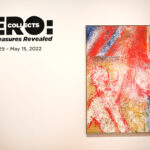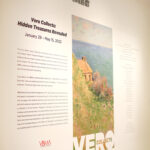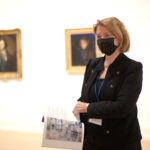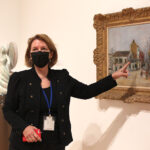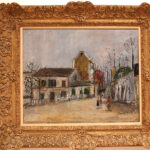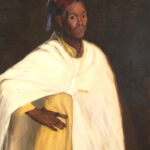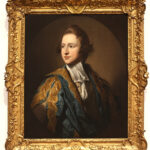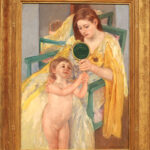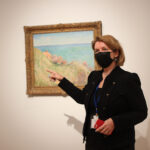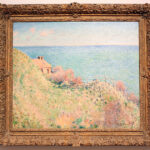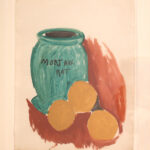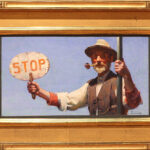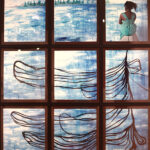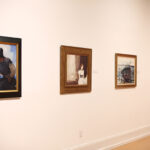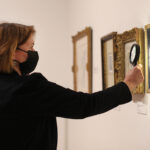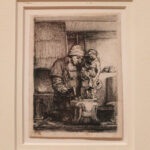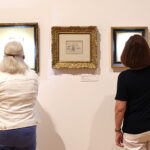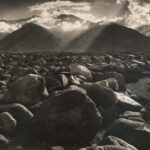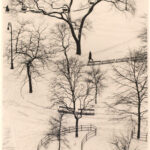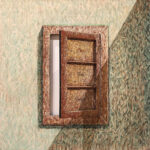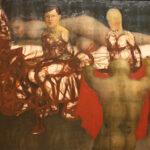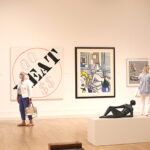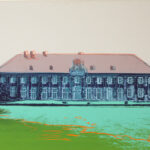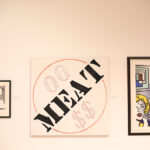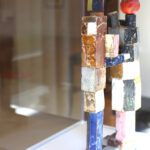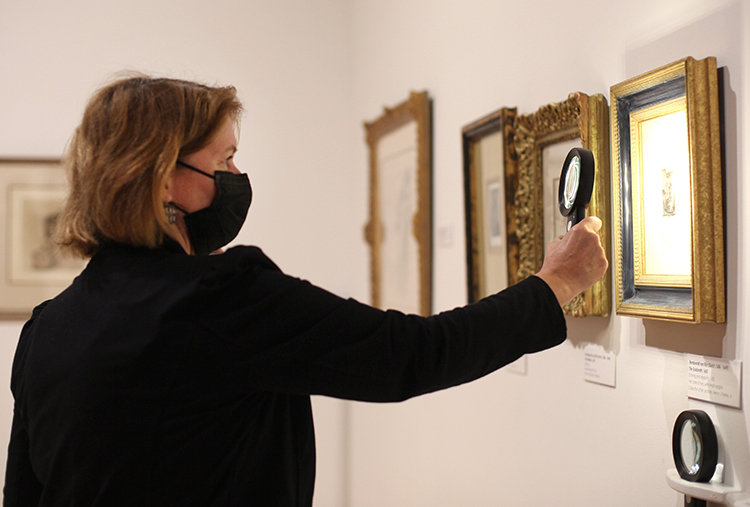
Currently on view at the Vero Beach Museum of Art, “Vero Collects: Hidden Treasures Revealed” features works of art from privately held collections in the Vero Beach area This is the third time the VBMA has mounted a Vero Collects exhibition; the last one two decades ago.
The exhibition includes well over 100 works from 50 local collections and occupies the Holmes, Schumann and Titelman galleries and the Stark Rotunda. Be prepared to stay a while when you visit. The show continues through May 15, providing plenty of time to revisit the extraordinary works two or three times before the show comes down.
If, after viewing Vero Collects, you hate to think about the end of this smorgasbord of delights, you can still enjoy the art for years to come. A catalog published by the VBMA for the exhibition is for sale at the museum gift shop. It features photos of all the Vero Collects works currently on loan, as well as a brief essay about each artwork, written by senior curator Anke Van Wagenberg.
Van Wagenberg says that she enjoyed visiting the collections from which this exhibition was drawn. Every collector she visited enthusiastically agreed to loan art for the show. There was only one drawback. Van Wagenberg says she needed to limit herself to the number of pieces she could request from any one collection.
“Actually, the numbers (of available works) were such that we had to limit it to three per collection. Most people have loaned us three works, and some loaned one, others loaned two, but nobody has, like, five pieces in the exhibition. We didn’t want to have 10 works from just one collector. We wanted to keep it fair.”
The greatest number of pieces from any one collection is from that of VMBA director emerita Lucinda Gedeon and her late husband, artist Francis Sprout. In addition to two paintings by Sprout, the show contains two works by other contemporary artists from the couple’s collection.
One of these is “Matriarch,” a 1969 etching by the American Charles White. Executed in warm brown ink on cream colored paper, the print depicts the profile of an African-American woman lost in thought. Her sturdy yet delicately realized features may put you in mind of the suffering Everywoman portrayed by the German printmaker Kathe Kollwitz. Like Kollwitz’s sufferers, White’s stoic matriarch bears not so much her own anguish, as that of the loved ones on whom she is surely reflecting.
At only 11 inches high and a little less than 13 inches wide, the print has the emotive power of a much larger work. It is truly one of the show’s gems.
For this writer, the most emotive pieces in the show are creations of intimate size. Like the Charles White, many of these are prints.
The smallest masterpiece in the show is a tiny Rembrandt etching called “The Goldsmith.” A fraction over 3 inches high, it is from the collection of Mr. and Mrs. Hank Feeley Jr. Its subject matter addresses the intimately human, lonely and ultimately spiritual act of artmaking.
The print depicts an artisan with a mallet working the base of a small sculpture of a woman with two babies, one at her breast, and the other at her side. With his free hand, the goldsmith embraces his creation to steady it, echoing the gesture of the female figure’s embrace of the toddler, who reaches toward the infant in her arms.
Behind the goldsmith, his furnace glows; within reach before him lies a pair of pliers. Both mallet and pliers recall instruments of the Crucifixion. The inclusion of these simple tools indicate that the smith’s sculpture is a depiction of Saint Mary with Jesus and St. John. This print is an allegory of faith. In it, Rembrandt refers not only to the faith of the artist in his steadfast craft, but to Faith as a virtue held by Christian believers.
There are so many details in this and two other small Rembrandt etchings on display that the museum has included two nearby lighted magnifiers, through which you can study those prints to your heart’s content.
The term “gem” is often used to describe valuable small objects other than precious gemstones. If the Rembrandt is a gem, there are several pieces in the exhibition that comprise the whole tiara.
Among them, an 1882 painting by the French Impressionist Claude Monet, “Customs House at Varengeville.” The source of the painting is listed in the gallery and the catalog as “Private Collection.”
Says Van Wagenberg, “It is really a top piece. This is of a cabin Monet rented on the coast of Normandy. He grew up very close to this area. The little house is no longer standing. It was built in Napoleonic times, so the customs officers could see distant ships coming in.”
On his initial visit, Monet painted more than one version of this scene. A master recorder of the picturesque, Monet evidently reveled in the textures and colors of nature that he found in Varengeville. He returned to the area nearly 15 years later to continue the series and found, to his delight, the cabin still intact.
Today the area “is very much a tourist area,” according to Van Wagenberg.
For the time travelers among us, standing before Monet’s 140-year-old canvas brings us shoulder to shoulder with the artist on that wild, windswept cliff.
If Monet’s painting is a tiara in the show, then Mary Cassatt’s 1905 painting “Denise and Child Holding a Hand Mirror” is the exhibition’s imperial crown. The painting’s source is also “Private Collection.”
Van Wagenberg calls it “an absolutely special, absolutely wonderful painting,” and terms Cassatt “a successful woman artist, very much in a man’s world.”
Cassatt was an American, trained at the Pennsylvania Academy. In the company of her parents, she later went to Paris for additional study. During that time, the young artist saw one of her paintings accepted into the Paris Salon. However, not long thereafter, the Franco-Prussian War forced the Cassatt family to return to the United Sates.
Mary Cassatt returned to Paris a year later, in 1871, and resided in France for the rest of her life. In 1877 Cassatt’s friend, Edgar Degas, invited her to join a group of independent artists with whom he was affiliated, which is how Cassatt became an exhibiting member of the French Impressionists.
The woman in Cassatt’s “Denise and Child Holding a Hand Mirror” was a professional artists’ model. At around the same date, Cassatt made a small print of “Denise Holding her Child.” The pair appear to be the same mother and daughter as in this painting.
Also painted about 1905, Cassatt’s “Woman with Sunflower” in the collection of the National Gallery of Art in Washington, D.C., is a compositional variant of “Denise and Child Holding a Hand Mirror.” It presents the same woman in the same dress with the same sunflower pinned to its front, seated in the same green armchair, and accompanied by the same nude child.
In the National Gallery painting, the child is seated in her mother’s lap, and we see the girl’s face reflected in the hand mirror that both figures grasp. The sunflower in that publicly held painting is conspicuously placed; some people say that it was a symbol of woman’s emancipation in that day.
The flower is not a focal point in “Denise and Child Holding a Hand Mirror.” Being able to see this lesser-known painting in the current exhibition provides a rare insight into Cassatt’s artistic practice, and in this case, her desire to explore the compositional possibilities inherent in two paintings of the same subject, while retaining the tender human connection in each one.
There are many abstract gems in Vero Collects to be seen. A future article about them is forthcoming.
Photos by Kaila Jones

